Samurai Art can be represented by posters, paintings, prints, figurines, or even samples of calligraphy related to the Samurai culture. Posters are probably the most popular and affordable articles of the modern world, but some of them can be from the old times and may not worth a fortune but still be more substantial collector’s items.
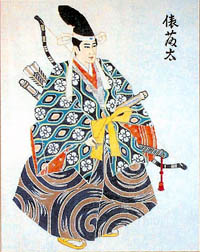 Another example of Samurai Art is prints and paintings, which you can find in a smaller number than posters. They can be contemporary pieces, but some can be quite old, even several hundred years old. Paintings and prints can be made on a usual canvas, but for traditional Japanese items, they can be on paper, folding screens, silk, and wood. You can find some rarities among them that can cost a little fortune.
Another example of Samurai Art is prints and paintings, which you can find in a smaller number than posters. They can be contemporary pieces, but some can be quite old, even several hundred years old. Paintings and prints can be made on a usual canvas, but for traditional Japanese items, they can be on paper, folding screens, silk, and wood. You can find some rarities among them that can cost a little fortune.
One of the popular calligraphic examples of Samurai Art is a set of drawings of seven virtues that according to the Samurai code, each Samurai should follow. The virtues are Honour, Courage, Respect, Loyalty, Benevolence, Truth, and Righteousness. The calligraphy samples are usually made in modern times, but from time to time you can see pieces made in the distant past.
When talking about Samurai Art mostly it would be referred to martial arts, but in fact, high-ranked samurai were well-educated people much versed in poetry, calligraphy, and arts. It was not uncommon that samurai were sponsoring young artists and whole schools dedicated to different kinds of art. Samurai ruled Japan for centuries and Samurai culture was closely connected to the development of arts in Japan.
Samurai Figurines
Samurai has inspired many artists of different disciplines and styles and you can find Samurai painted, engraved, sculpted, or molded in a great number of artworks, including figurines.
 The finest of the materials ever used for figurines is porcelain, which first originated in China and then spread out to the rest of Asia and Europe. First European porcelain figurines were made in the German city of Meissen, which still famous for its porcelain artworks. In the early 20th century, they even molded porcelain coins due to the lack of metals, precious or not. In Japan, Kutani porcelain was used for making porcelain figurines, including Samurai figurines. Kutani porcelain started to be used from the 17th century, but most of the work you happen to see would be dated not earlier than the 19th century. Many collectors nowadays refer to any Japanese porcelain figurines made with red, gold, and black colors as Kutani, regardless of actual porcelain, time, and origins of the items.
The finest of the materials ever used for figurines is porcelain, which first originated in China and then spread out to the rest of Asia and Europe. First European porcelain figurines were made in the German city of Meissen, which still famous for its porcelain artworks. In the early 20th century, they even molded porcelain coins due to the lack of metals, precious or not. In Japan, Kutani porcelain was used for making porcelain figurines, including Samurai figurines. Kutani porcelain started to be used from the 17th century, but most of the work you happen to see would be dated not earlier than the 19th century. Many collectors nowadays refer to any Japanese porcelain figurines made with red, gold, and black colors as Kutani, regardless of actual porcelain, time, and origins of the items.
A popular style of traditional Japanese figurines is Hakata clay dolls. This variety of pottery originated in Fukuoka Prefecture, which lies in the north of the island of Kyushu. The style was founded around the end of the 16th century and was originally called Sohichi-yaki (Sohichi Pottery), after the founder of the style.
Another style of traditional Japanese miniature sculpture for Samurai figurines is Netsuke, which was originally made as fasteners for securing cords to a traditional Japanese sash (Obi). Netsuke is usually very small and can be carved, made, or molded from different materials, including bone, wood, ivory, and metals.
Less traditional Samurai figurines manufactured in the present day can be pretty much made of anything and in any style. You can find pewter and metal figurines, as well as resin and plastic ones. Besides decorative Samurai figurines, there’re of course action figurines, depicting heroes from books, movies, and manga. Whether you’re a Samurai figurines collector or just interested in Japanese culture, you can find many interesting items here.
Samurai Calligraphy
When talking about Samurai Calligraphy, it would be most often referred to as traditional Japanese art Shodo, which is a form of calligraphy or artistic writing. The art of Shodo originally came to Japan from China along with Chinese characters, but later was adapted and absorbed, getting distinct and specific Japanese aesthetic. Samurai Calligraphy as the whole Samurai culture was closely connected to Zen Buddhism, focusing on the spiritual nature of the art. The brush strokes should have to be done in one exact movement – no corrections were allowed – and even a small lack of confidence would show up in the drawing. Concentration, precision, and smooth flow were a must and the art of Shodo was often compared metaphorically and sometimes literally to the art of sword-wielding.
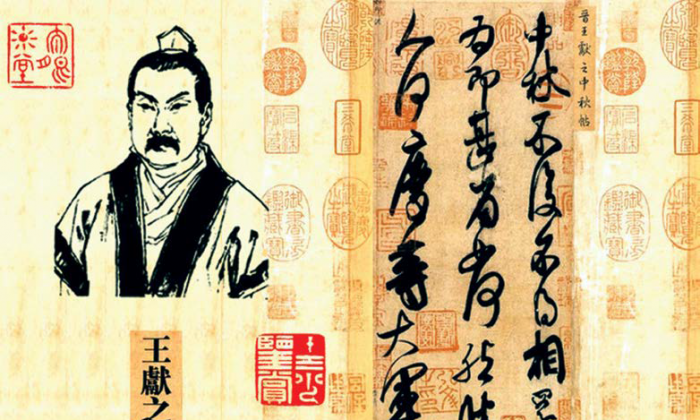
Examples of Samurai Calligraphy that you’ll find in this section can vary in types and can be done on silk, bamboo, wood, paper, fabric, and some other less common materials. The drawing can be of several characters or of singular ones. It’s common for Shodo practitioners to draw their names as well, but phrases or quotes were also not uncommon.
One of the popular examples of Samurai Calligraphy would be a set of drawing of characters symbolizing seven virtues that every Samurai should follow and that was a part of Bushido. These virtues are Honour, Respect, Loyalty, Courage, Truth, Righteousness, and Benevolence. The drawing can be of the old-time, but quite likely they would be done by modern practitioners of Shodo, which make them not less desirable, but rather more affordable.
Calligraphy or Shodo is taught as a subject in universities and even elementary schools of Japan, but at the time of Samurai, it was accessible and affordable only for high-ranked and nobles. Even though many Samurai were practitioners of Shodo, it was not uncommon for some Samurai from poorer casts not to be well educated or versed in calligraphy.
Shodo drawings made by professional Shodo masters can be a fine addition to the décor of your living room and it’s getting more common to decorate houses and offices with traditional Japanese calligraphy writings as they give a place a sophisticated touch of the mysterious Eastern culture.
Samurai Paintings
Samurai Paintings depict Samurai or related to the Samurai culture. Samurai inspired a great number of artists both foreign and Japanese and both modern and of old times. Some of the Samurai paintings would be made in contemporary western style, but a great number would be made in the traditional style of Japanese art, regardless of the time and origins of artists making these paintings.
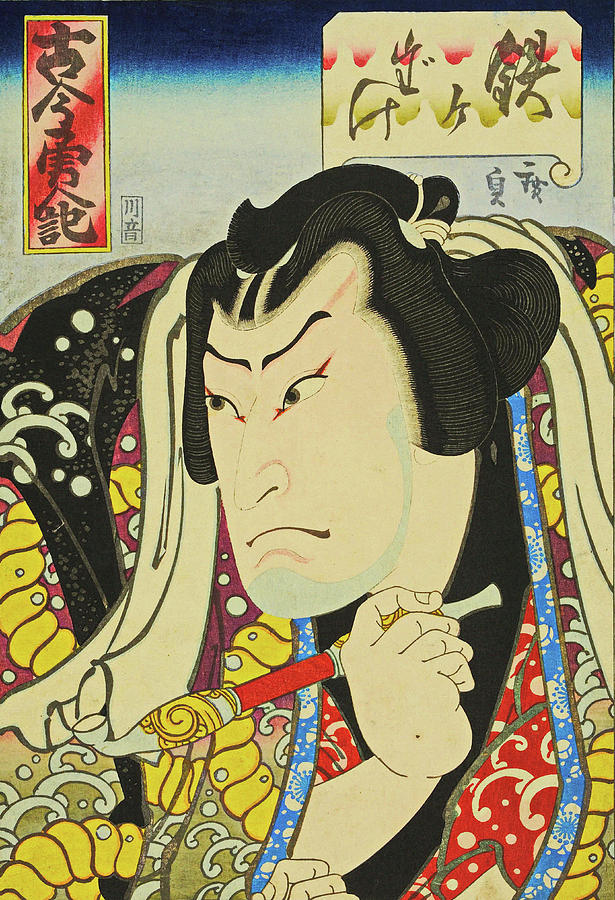
Samurai paintings made in traditional Japanese style can be painted on many different types of media. The least common of them thought would be common for Westerners framed canvas, which came in popularity in Japan only in the late 19th century. We will list some of the common forms of traditional Japanese paintings here: Kakemono is probably one of the most popular media. The Kakemono means “Thing on the Wall” and it’s a vertical scroll with a roller on both ends, with a string attached to one end of the scroll that you can hang it on the wall. Another popular form is Emakimono, which means “Image thing that you can roll”, and it is a long scroll made of single sheets connected together; this one is a very old way of doing traditional Japanese paintings. Another style of Samurai paintings you can see is Byobu, or folding screens, which originated in China and came to Japan in the 7th century. Sliding doors (called fusuma) and fans (called uchiwa) are other possible things where you can find Samurai paintings on.
There were also different painting schools and styles that were used for Japanese traditional paintings. Suibokuga is the style of painting in black ink and it came from China and was strong influenced by Zen Buddhism. The Kano style established by Kano Masanobu and his son Kano Motonobu in the 15th and 16th centuries was started as a protest to Chinese paintings in black ink listed above. A sub-style of Kano was the Shijo style, started in the 18th century and characterized by not idealized subjects taken from people’s everyday life. Yet another style that you can find Samurai paintings made in was Tosa-Ha, which was a painting school specialized in small miniature formats.
Whether you’re a collector or just interested in Japanese culture and Samurai, one of the Samurai paintings can be an excellent addition of the Eastern touch to the décor of your house or office.
Samurai Prints
Samurai prints, like any other prints, are not just copies of paintings, but rather unique impressions of particular artworks. Printmaking is not the process to create copies of a painting, but rather to get unique qualities that each of the prints would possess after printing.
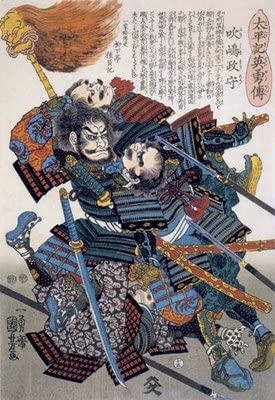 A surface that is used for making prints is called a matrix, and depending on the type of material used for the matrix, there will be different techniques for creating prints. Some of the common types are engraving and etching that is done on plates of copper or zinc; lithography with carvings on stone; woodcuts are made with blocks of wood; screen-printing is done on fabric, and linocuts are made with linoleum matrices.
A surface that is used for making prints is called a matrix, and depending on the type of material used for the matrix, there will be different techniques for creating prints. Some of the common types are engraving and etching that is done on plates of copper or zinc; lithography with carvings on stone; woodcuts are made with blocks of wood; screen-printing is done on fabric, and linocuts are made with linoleum matrices.
Samurai prints, specially created in the modern time, can be made using any kind of printing technique, but for more traditional prints, a traditional Japanese printing technique called Ukiyo-e can be used. Ukiyo-e, translated as “pictures of the floating world”, is a kind of Japanese woodblock printmaking (also called woodcuts). It was used for paintings as well and was in use in Japan from the 17th to 20th century. Ukiyo-e was not only used to make Samurai prints, but also for making motifs of landscapes, theatrical scenes, and historical events. As this technique was suitable for mass-production, Ukiyo-e prints were more affordable for middle and low-class townsmen. The prints featured portraits of popular actors, famous samurai, and beautiful courtesans.
As with all Japanese arts, making Ukiyo-e Samurai prints was a sophisticated and complex process involving skills, precision, and imagination. The prints were most popular during the Edo and Meiji periods and were produced until the beginning of the 20th century. The founder of the style was Hishikawa Moronobu with his single-color works that he’s done in the 1670s.
Samurai prints are popular collector’s items: they’re more affordable and available than original paintings, yet they’re original enough to be treated on an individual basis. Whether you’re a print collector or just interested in Japanese history and culture, you can find many interesting items in this section.
Samurai Posters
Samurai Posters are very popular collector’s items – they’re usually not very expensive, but you can find some vintage pieces that can be valued at a hundred dollars. Samurai posters are always available in a great number and variety and they’re easy and relatively cheap to post.
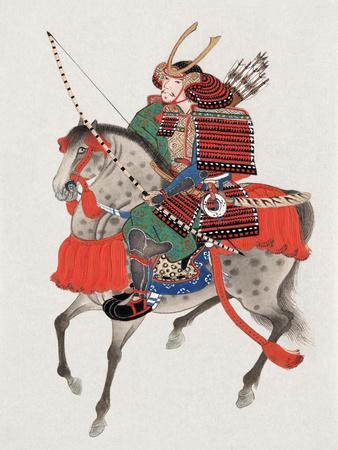 Most of the Samurai posters you find here are movie posters or anime posters, but there are also some older Japanese propaganda posters, some advertising posters, and even education and training posters for various Japanese martial arts. The latter ones don’t appear often in this section though.
Most of the Samurai posters you find here are movie posters or anime posters, but there are also some older Japanese propaganda posters, some advertising posters, and even education and training posters for various Japanese martial arts. The latter ones don’t appear often in this section though.
Among all posters, the most popular ones no doubt are posters for the Seven Samurai movie, by Akira Kurosawa. They are often modern posters, but there is a chance you can come across an original Seven Samurai poster, which is of course more valuable and desirable. The Seven Samurai movie was created in 1954 and many critics consider it as the greatest and most influential film ever made. You can hardly argue with it as it inspired dozens of movies and you can find an adapted version of Seven Samurai almost in any country you pick. You can say that this movie started the Seven Samurai-style that is still exploited in cinematography.
None of the other movies, books, or anime is getting close in popularity for Samurai posters, but among others, you can find a variety of posters for The Last Samurai movie with Tom Cruise, who added a lot with this film into popularisation of the Samurai Culture. Afro Samurai posters are quite common as well as Deeper Kyo and Samurai X posters.
If you’re a Samurai poster collector or just an enthusiast of Samurai or Japanese culture, no doubt you will find a few interesting pieces while browsing. It may be a nice addition to your collection or a new touch for the décor of your living room. Some of the Samurai posters are very artistic and can be used as decoration for offices or dojo as well.